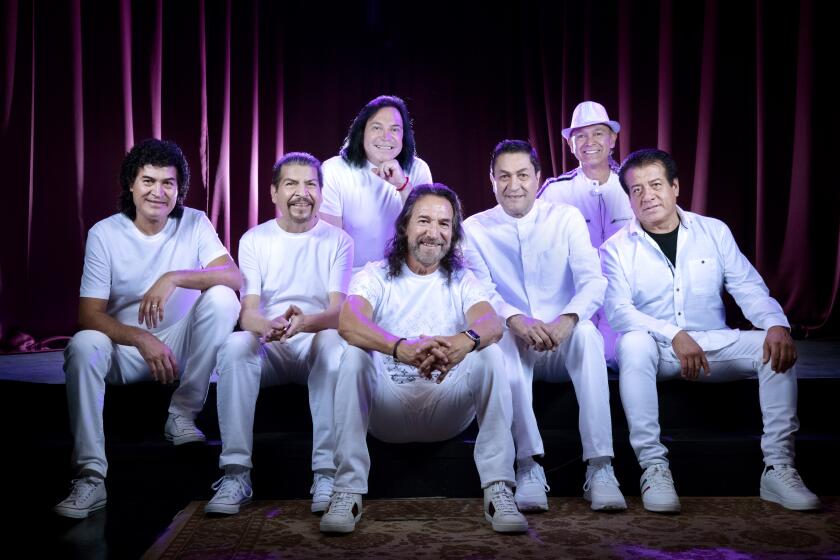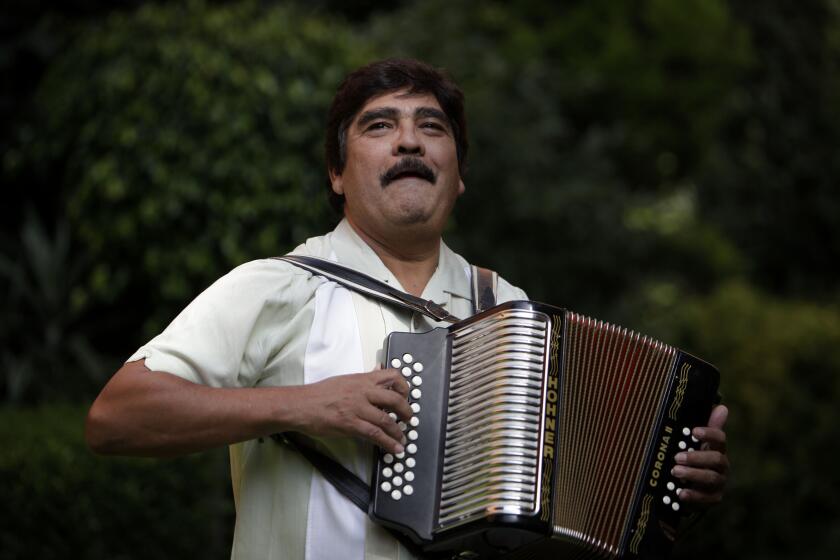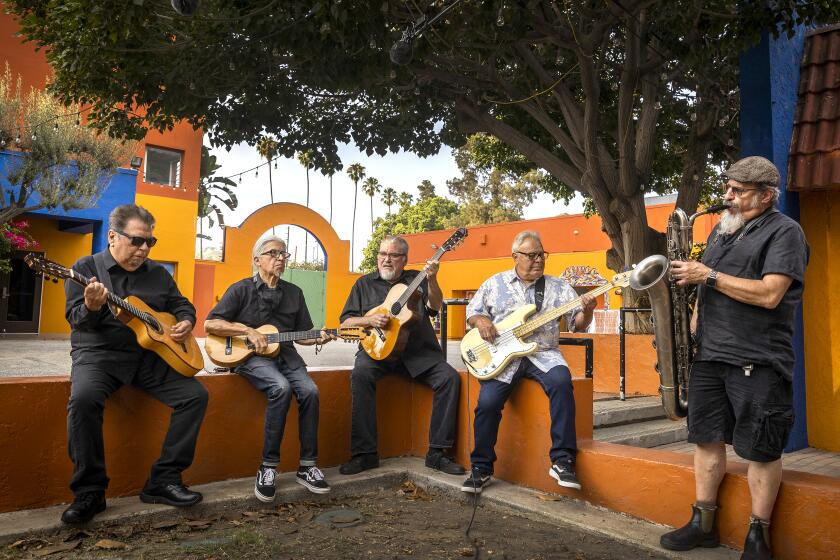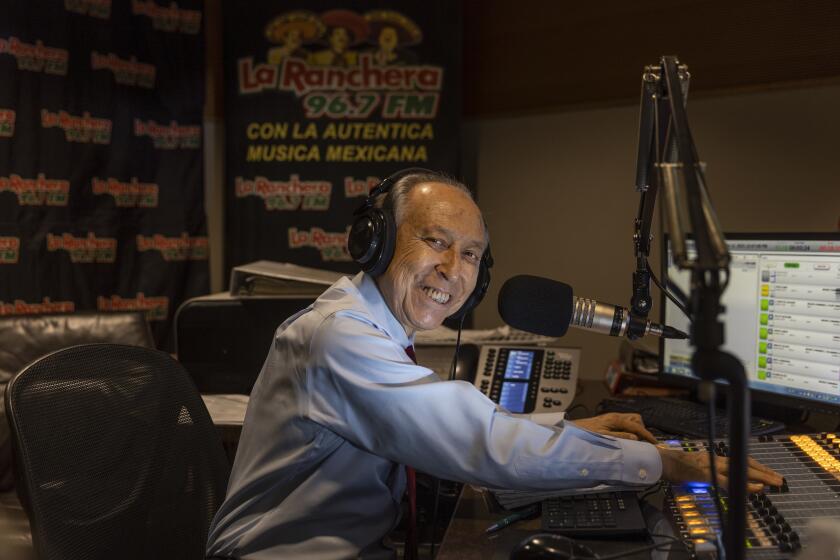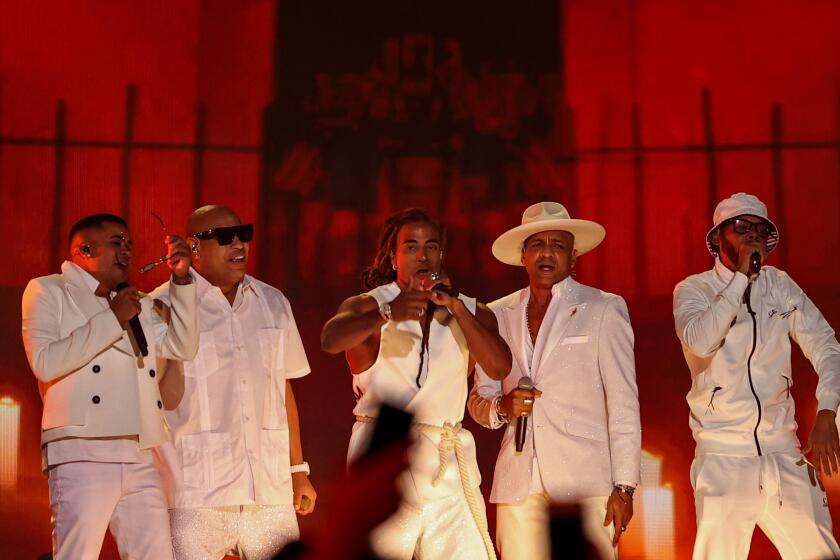The Mexican band Los Ángeles Azules has been making music for four decades, winning fans worldwide.
GREENSBORO, N.C. — Antonio Romero had waited all night in a packed arena here for the band to play his favorite song, a brassy, sultry cumbia he had danced to as a teenager in Mexico City.
It had been 22 years since he had left home, 22 years since his friends had told him: “We found a beautiful place. It’s 100% different than Mexico, but it’s beautiful.”
And they were right. North Carolina was beautiful, the work plentiful. But even though Romero, now 42, had built a good life here — with a family, a well-paying job as a handyman and a side gig as a DJ for quinceañeras and cumpleaños — the truth was his heart often ached for Mexico.
He missed the chaos of the capital, the greasy miracle that is a quesadilla de chicharron. Most of all he missed his mother and his siblings, who 25 years earlier had accompanied him to a street festival to see the very band now before him on a Greensboro stage: Los Ángeles Azules.
So when the opening accordion line of “El Listón de Tu Pelo” finally rang out, igniting a roar from the audience of 4,000, Romero was flooded with nostalgia. He belted the lyrics — “Untie the ribbon from your hair / Remove the dress from your body” — and shuffled side to side with his friends. And when he looked over at his wife, who was also born in Mexico, his eyes were shining with tears.
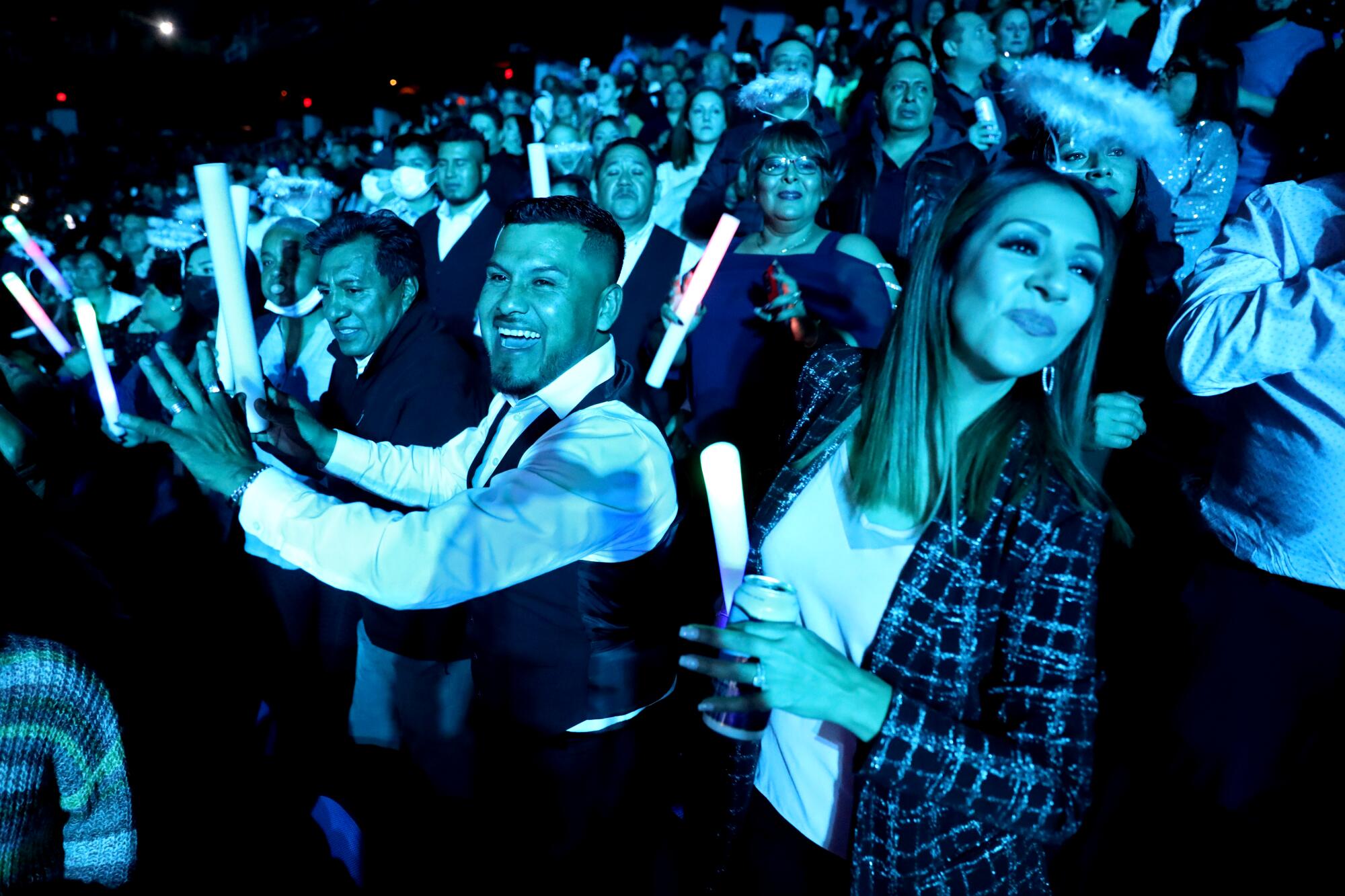
Los Ángeles Azules is a band that transports — and connects. Its achingly romantic cumbias were born in Mexico City’s barrios but have come to transcend class and geography, booming at both block parties and extravagant weddings from California to Argentina. A few of its songs have been streamed on YouTube well over a billion times.
The longing melodies, layered over the trancelike scraping of the guacharaca, carry an undeniable magic — a synchronicity of sound and feeling that flows naturally when six brothers and sisters have been making music together for four decades.
“It’s a beautiful harmony,” said Elías Mejía Avante, 65, the eldest and the band’s front man. “That’s something that is transmitted to the people.”
The siblings were children when their parents bought them instruments and sent them to play parties around Iztapalapa, their working-class warren of concrete block homes. Bands were always fed after performing, so the parents knew their kids wouldn’t go hungry.
It’s been a long, sometimes turbulent journey since: uncountable hours on the road, a difficult period when cumbia fell out of style and a remarkable comeback fueled by a reinvention of the band’s sound and collaborations with some of Latin music’s biggest stars.
Which is how they found themselves here, midway through a triumphant 40th anniversary tour through the United States. By the time they arrived in Greensboro, on a chilly day in November, they had already played sold-out shows in Houston, Las Vegas and Los Angeles.
Now they were embarking on a three-date run in the South, home to America’s fastest-growing Latino population, which now exceeds 23 million.
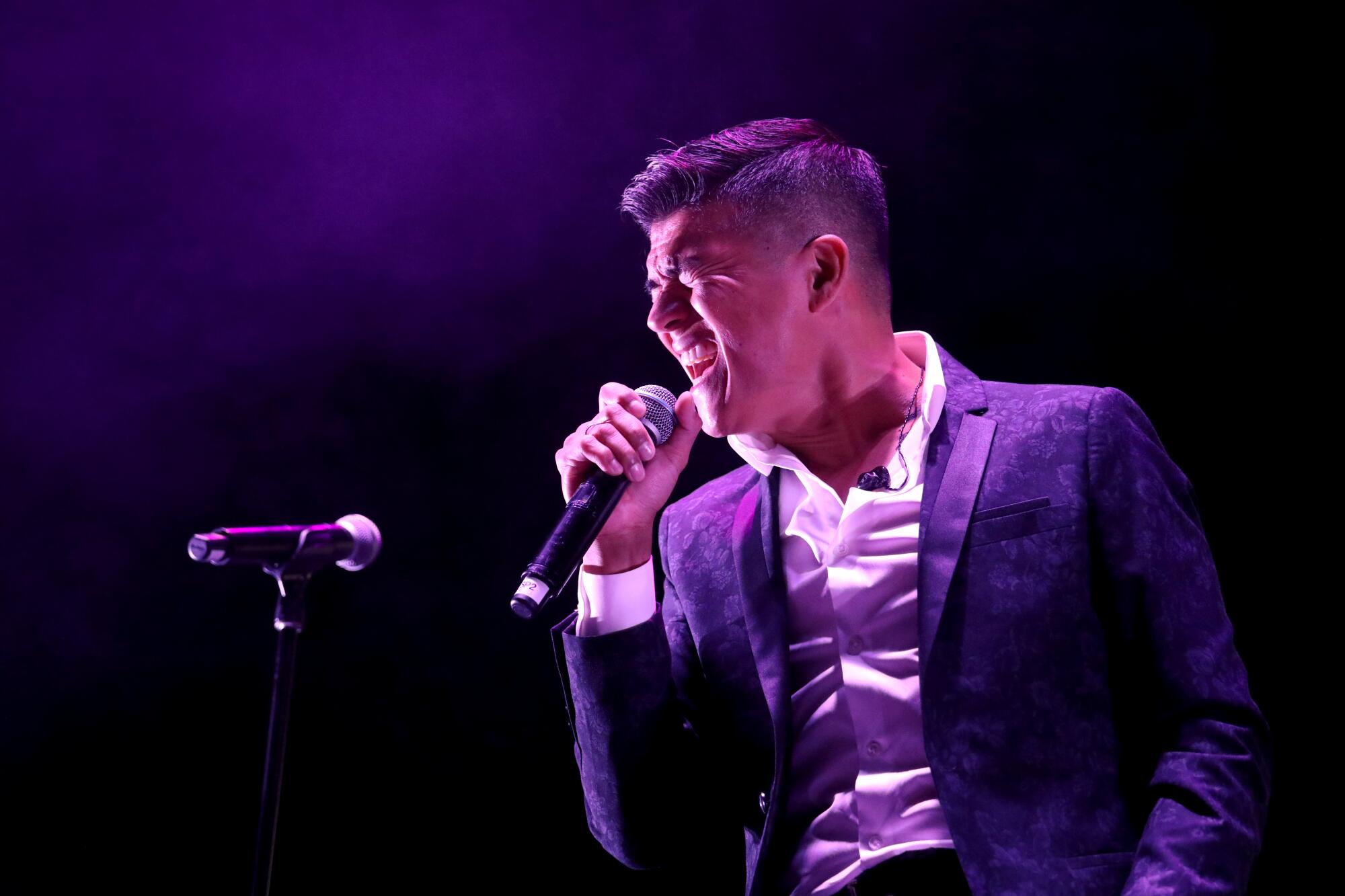

In North Carolina, where it’s not uncommon to see a Mexican or Salvadoran flag flying along a country lane, 1 in 6 children is Latino. Many are the American-born offspring of immigrants, like Alfredo Ordoñez, 30, whose parents came from Guatemala.
“I love the South,” Ordoñez drawled. “I represent it all the way.”
When Ordoñez was a kid, he would roll his eyes when his mom played Los Ángeles Azules while she was cleaning. He preferred Kanye West or 50 Cent. But when he found out the band was coming to Greensboro, just 20 miles from his hometown of Liberty, he told his wife they had to go.
“It’s a lot of nostalgia,” he said of the band’s music. “It kind of grows into you.”
The first song had just started when the aisles began filling with spinning couples. Ordoñez and his wife didn’t quite know how to cumbia, but joined in. The steps, they realized, weren’t so different from country western line dancing.
Later on, Elías, the front man, began calling out different regions of Latin America.
“Are there people with Mexican blood running through their veins?” he asked. Thunderous applause.
“Are there people here from Central America?”
The response was a little less loud, but Ordoñez was doing his part, howling with pride.
Mexican grupera band Los Bukis will play its first shows in 25 years at a sold-out SoFi Stadium. “The music,” says Marco Antonio Solís, “survived everything.”
A lonesome accordion melody drifted down the concrete halls of a stadium in Duluth, Ga. In a bare, fluorescent-lit dressing room, the youngest of the Mejía Avante siblings was warming up the instrument that he credits for the band’s “classic sound.”
“This is what gives me work,” said Jorge, 54, gingerly setting down his red-and-gold Hohner. The accordion, which he bought 15 years ago while the band toured Uruguay, is made for students, its narrow keys and light body a better fit for Jorge’s slim fingers and slight frame.


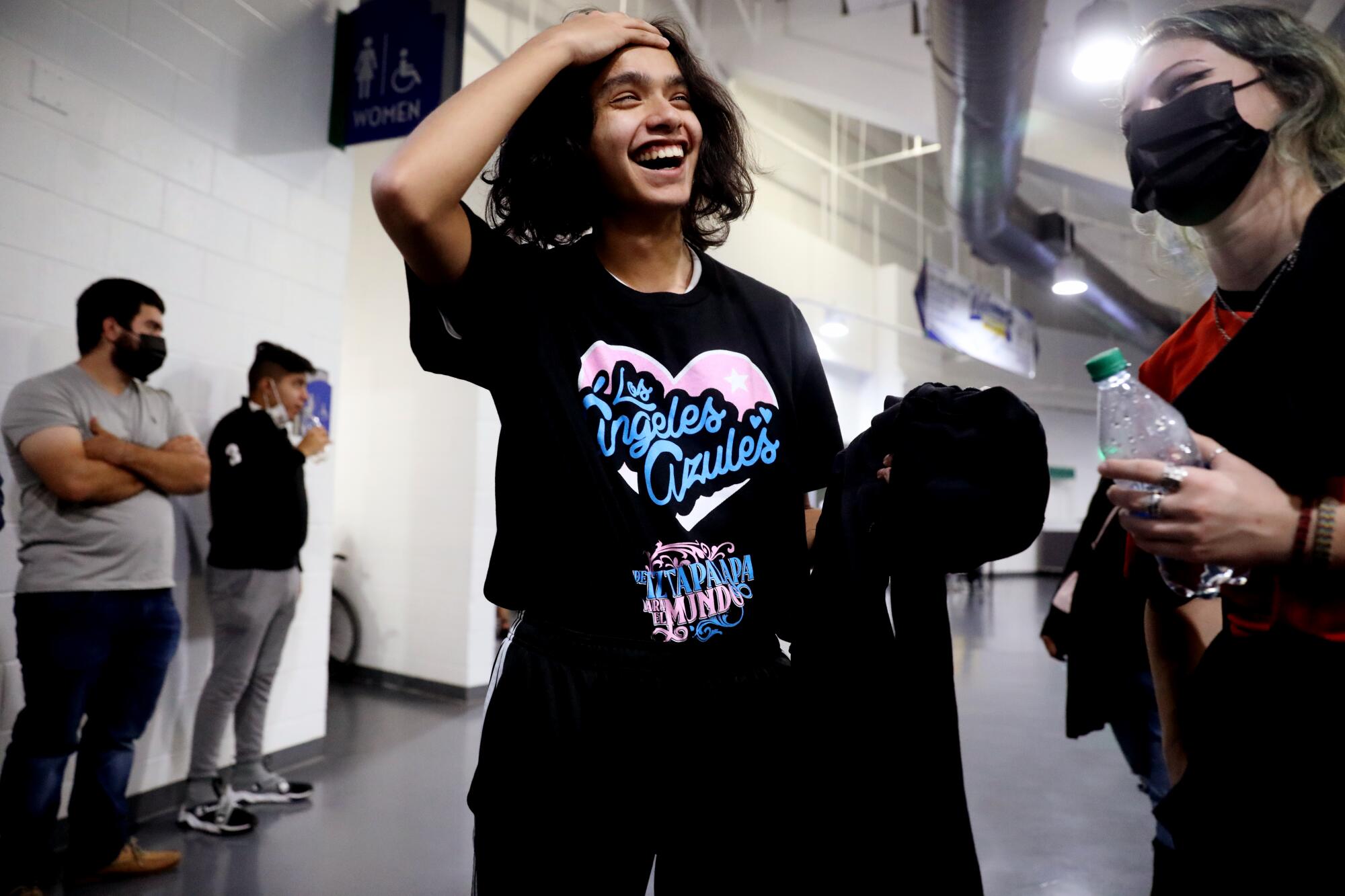
His siblings all play efficiently enough — Elías the bass, José the timbales, Cristina the guacharaca, Guadalupe percussion and Alfredo the keyboards — but Jorge is the band’s composer and driving creative force.
Onstage each night, as gregarious Elías seduces the crowd, Jorge flits around, fine-tuning the sound produced by his siblings and the 11 other musicians that make up the band. When he’s most engrossed, his wire-frame glasses slip down his nose, giving him the air of a contented professor.
He was 11 when his mother, Doña Martha, enrolled him and Alfredo in a free music school, hoping to up the musicianship of the family band. While most of the siblings are self-taught, Jorge studied at Mexico’s national music conservancy, even as he earned a degree in architectural engineering.
Doña Martha made all of her kids study for other careers, a fallback in case the music didn’t work out. Elías became a doctor.
In the band’s early days, the siblings traveled across Mexico playing small-town fiestas, their father doubling as mechanic and their mother cooking whatever they could afford at the market on a charcoal grill. The band concentrated at first on instrumental cumbia, a style that had migrated to Mexico’s working-class neighborhoods from its birthplace of Colombia.
Celso Piña, a musical pioneer known for his fusion of cumbia and tropical sounds as a base, suffered a heart attack and died. He was 66.
But later Jorge began writing different kinds of songs, laying romantic lyrics more typical of ranchera music over shuffling cumbia beats. They became massive hits.
The first, “Como Te Voy a Olvidar,” was a 1996 ballad about spurned love that still leaves fans singing along:
If you are in a rose
If you are in every breath
How can I forget you?
How can I forget you?

It was around that time when the band began touring the United States, where a growing community of Latino immigrants was hungry for familiar sounds. They played at first in sweaty dance clubs in Los Angeles, Chicago and New York, but were soon traveling to new outposts of immigrant life.
That included the Southeast, where an economic boom beginning in the 1990s meant bountiful work for Latino migrants.
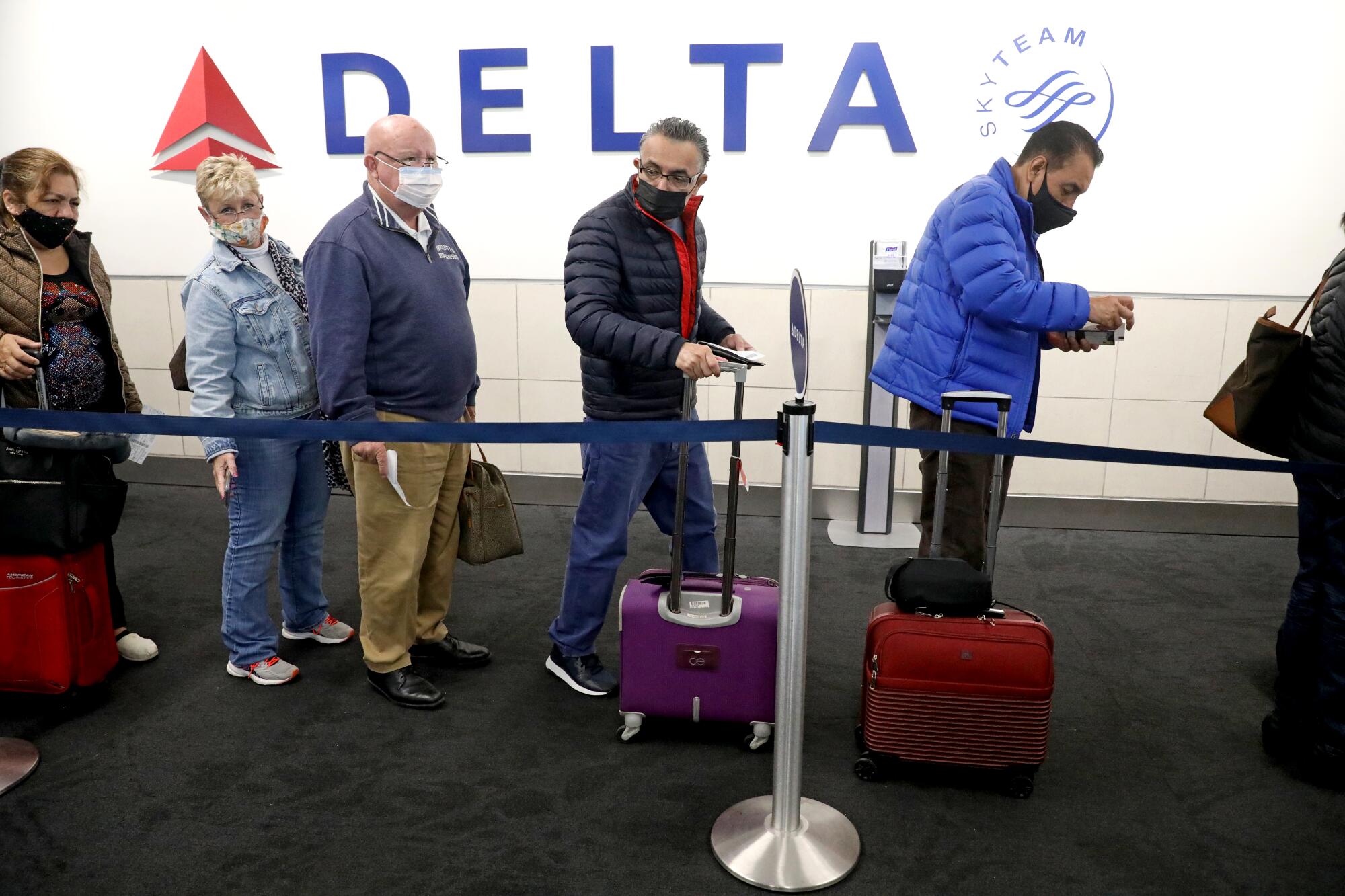
Adriana Guerrero and her construction-worker husband, Alfonso Rico, arrived in Alabama 11 years ago. Born and raised in Mexico, they had been living for years in South Los Angeles, but struggled with rent and worried their children might fall victim to gang violence. In Birmingham, where they bought a house for $16,000, their kids were flourishing.
They had driven three hours to the show in the Atlanta suburb of Duluth, where Baptist churches and rambling clapboard homes are interspersed with Mexican meat markets, bakeries and ice cream shops.
“This music reminds me of the city, of my family,” Guerrero said.
“At our events we started realizing that it wasn’t just Latinos in the audience. It was also people from the U.S. who don’t even speak Spanish.”
— Guadalupe Mejía Avante
As she and her husband took their seats in the buzzing arena, Jorge was backstage, warming up the band.
“It’s time!” a roadie yelled, and soon the musicians were hustling through the cold hallways, dressed in matching suits and shiny dress shoes. They paused for a moment in the cavernous darkness just behind the stage.
Jorge silently set an intention. His goal with each show, he said, is to “wrap people in a sphere of love.”
Then he walked out, curled his fingers around the accordion, and began to play.
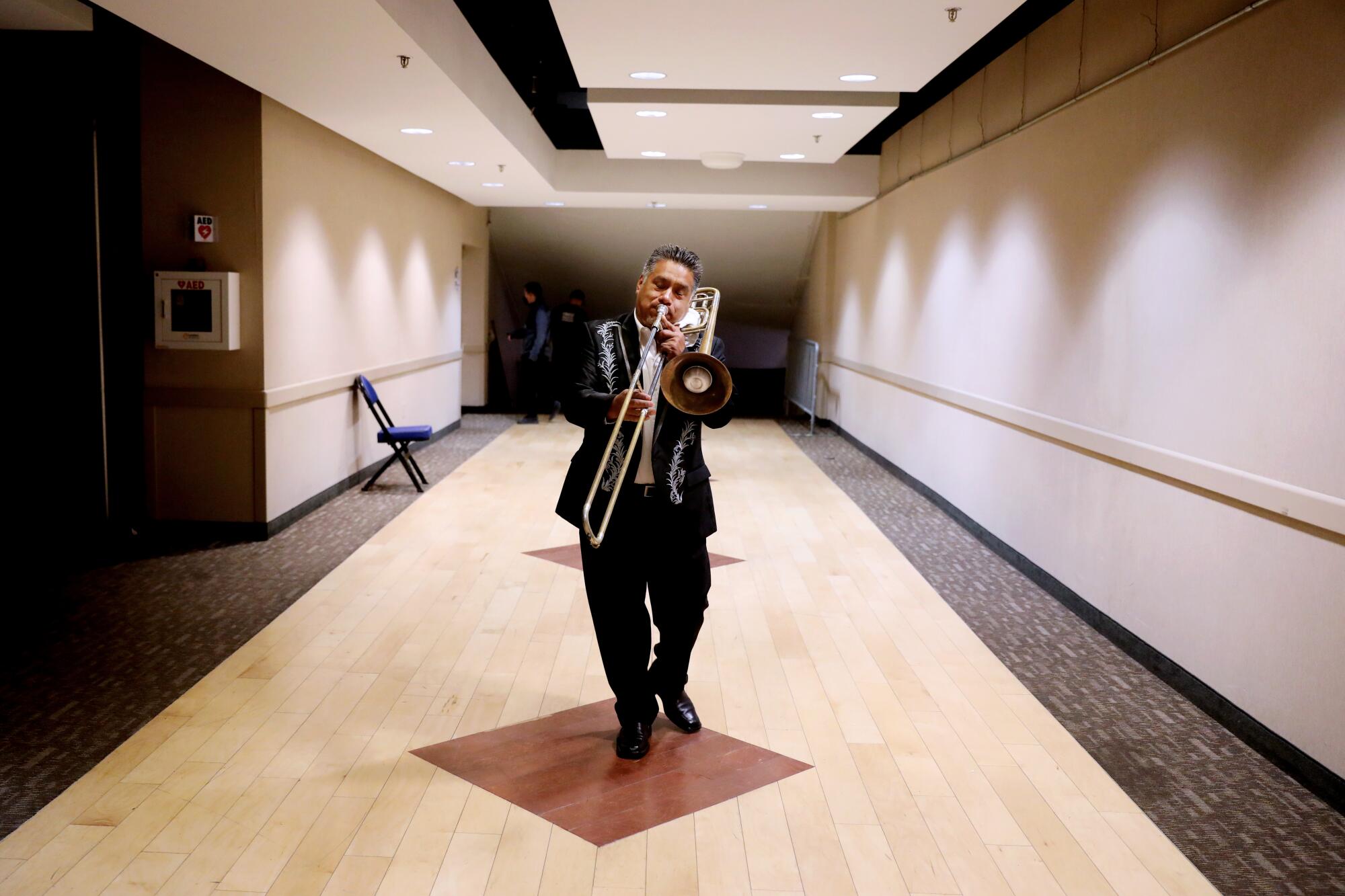

The next morning the band took a commercial flight from Atlanta to Fort Myers, Fla. Out the windows, verdant farmland gave way to the sky blue Gulf of Mexico, then the white beaches of Florida.
The band members didn’t notice. Sleeping on planes is a necessary skill when you’re in a group that has been known to play 32 shows in a month with 31 days.
The pandemic forced Los Lobos off the road for the first time in 40 years. The downtime led to questions about the future, then an all-L.A. covers album.
It wasn’t always this busy. For decades, cumbia was dismissed by the elites in Mexico as “naco,” slang for “low class.” Then, around 15 years ago, the genre began falling out of favor even among the base audience and record sales plummeted.
During those years, the band members occasionally fell back on their day jobs. Elías saw patients at his clinic in Iztapalapa, where all the siblings still live.
Their dry spell ended when the band signed with OCESA Seitrack, a Mexican label that pushed them to reinvent their sound. They recorded with singers from the indie world — such as Lila Downs and Carla Morrison — and Jorge began scoring for violins, cellos and other orchestral instruments, a throwback to his days at the conservatory.
The result, a hybrid known as “cumbia sinfónica,” resonated deeply, with several tracks — including “Mis Sentimientos,” with singer Ximena Sariñana — becoming worldwide hits. Soon, invitations to major festivals flooded in. Coachella beckoned. Some of Mexico’s wealthiest citizens paid large sums for the band to play at their weddings.
“El Rancho de Vicente” has played the music of Vicente Fernández for more than 20 years.
And their fan base expanded.
“At our events we started realizing that it wasn’t just Latinos in the audience,” said Guadalupe. “It was also people from the U.S. who don’t even speak Spanish.”
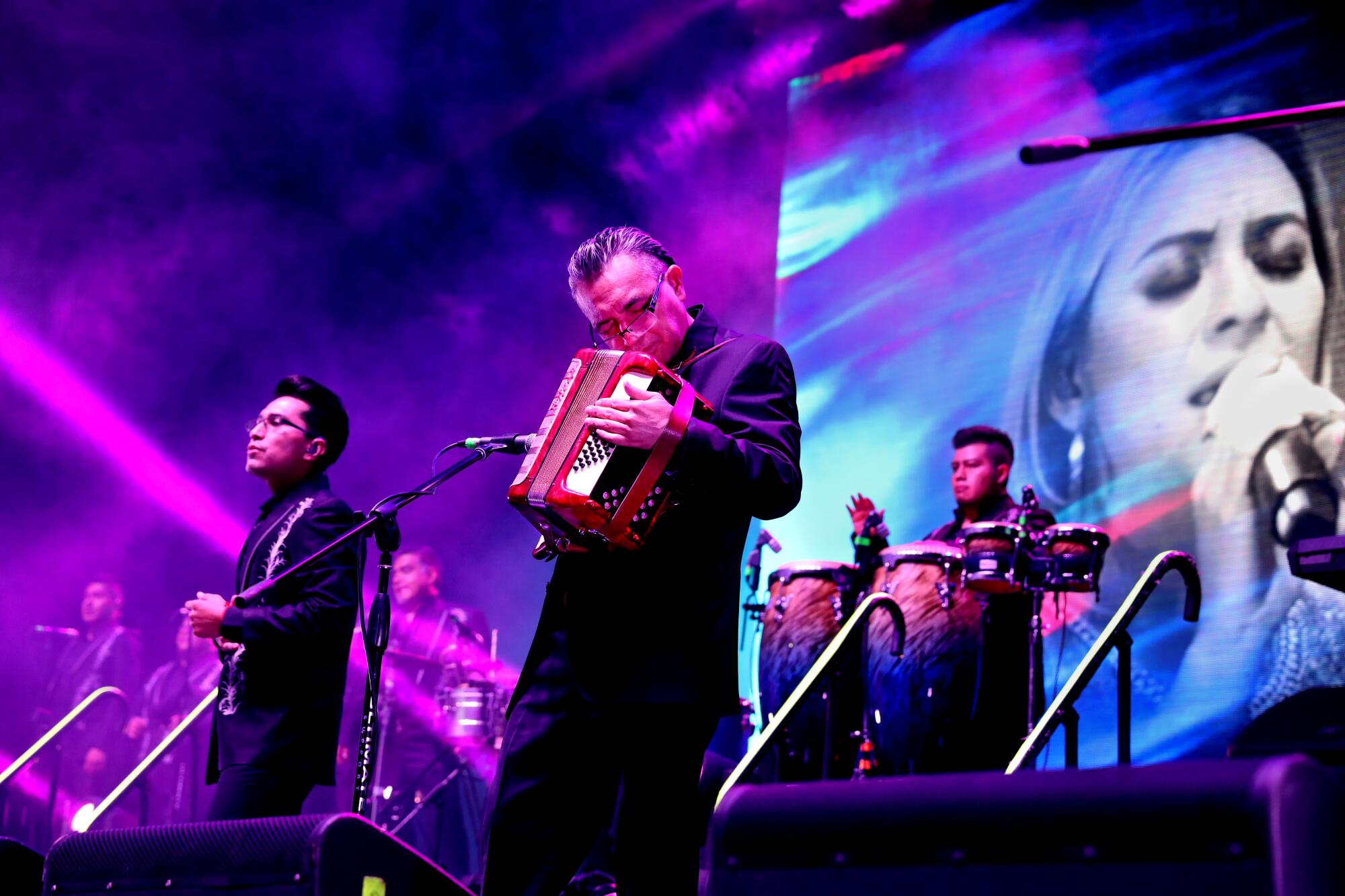
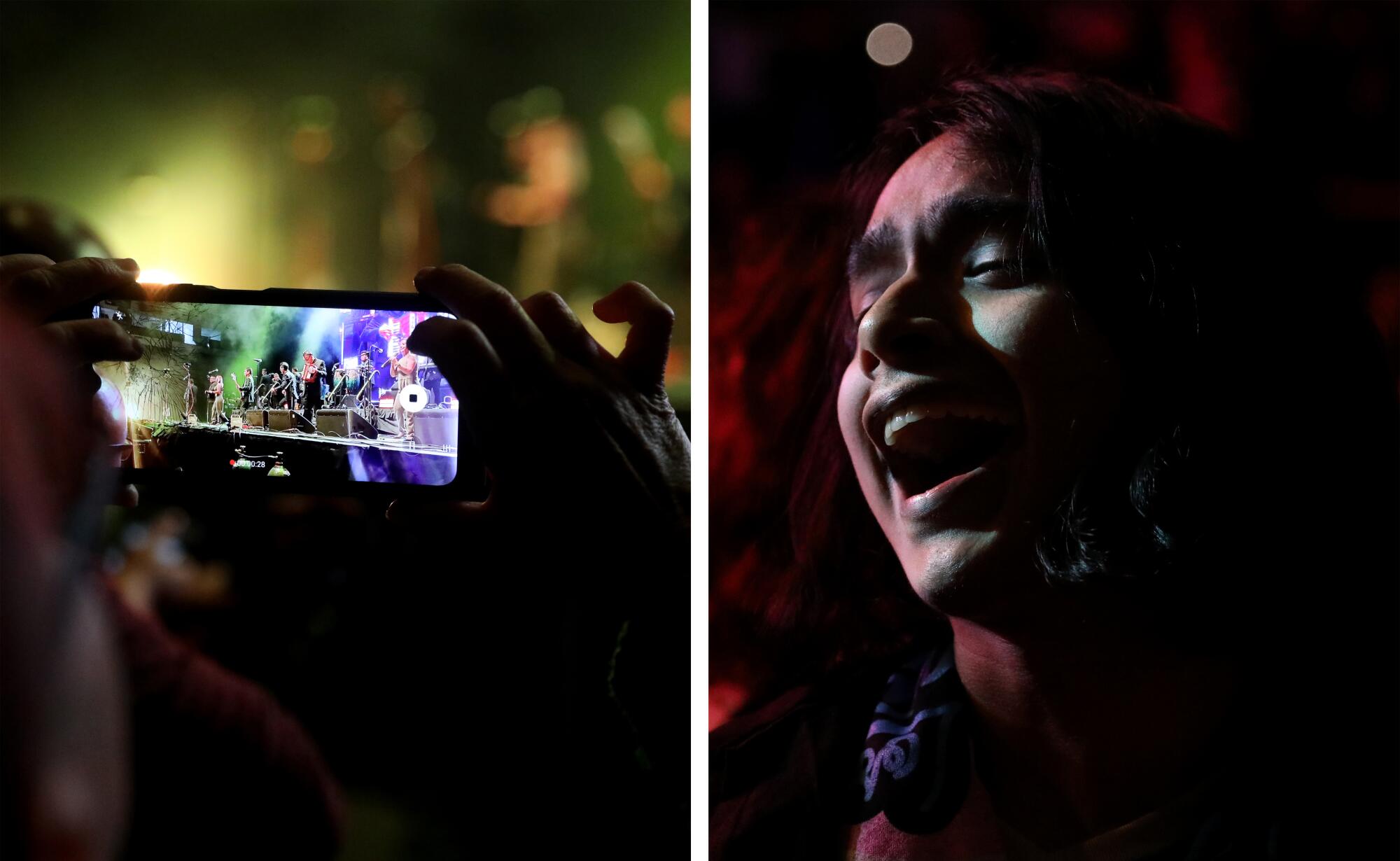
But their newfound success has been bittersweet. Last year, Doña Martha died at 94.
She had been a famous disciplinarian, making sure the band focused on music — not partying — while on tour, and scolding her children if they said something impertinent in an interview. But she was also deeply affectionate, and no matter where they traveled, she never let them forget where they were from.
“I will never find love like yours,” went a song, “Martha,” that the band wrote for her in the 1990s.
“Each one of us thought we were her favorite,” said Elías, who held her in his arms as she took her last breath.
A protest song against conditions in Cuba won song of the year, and Panamanian icon Ruben Blades took home album of the year at the Latin Grammys.
The band’s first tour after her death feels different, the siblings agreed. Their father is back home in Iztapalapa. But they were still happy to be back on the road after so many months in lockdown. Livestreamed performances weren’t the same.
“The audience is food for the musician’s soul,” Jorge said. “They make us play better.”
The crowds too were ready to hear live music again and to let Los Ángeles Azules carry them once more to homelands far away.
“I’m ready to party!” Lucy García yelled out her window as she pulled up to the concert venue in Estero, Fla.
García, 60, crossed the border from Mexico at 15 and went on to found a nonprofit that helps Latina migrants. She and her husband, a musician, have traveled to all 50 U.S. states and met Mexicans in each of them.
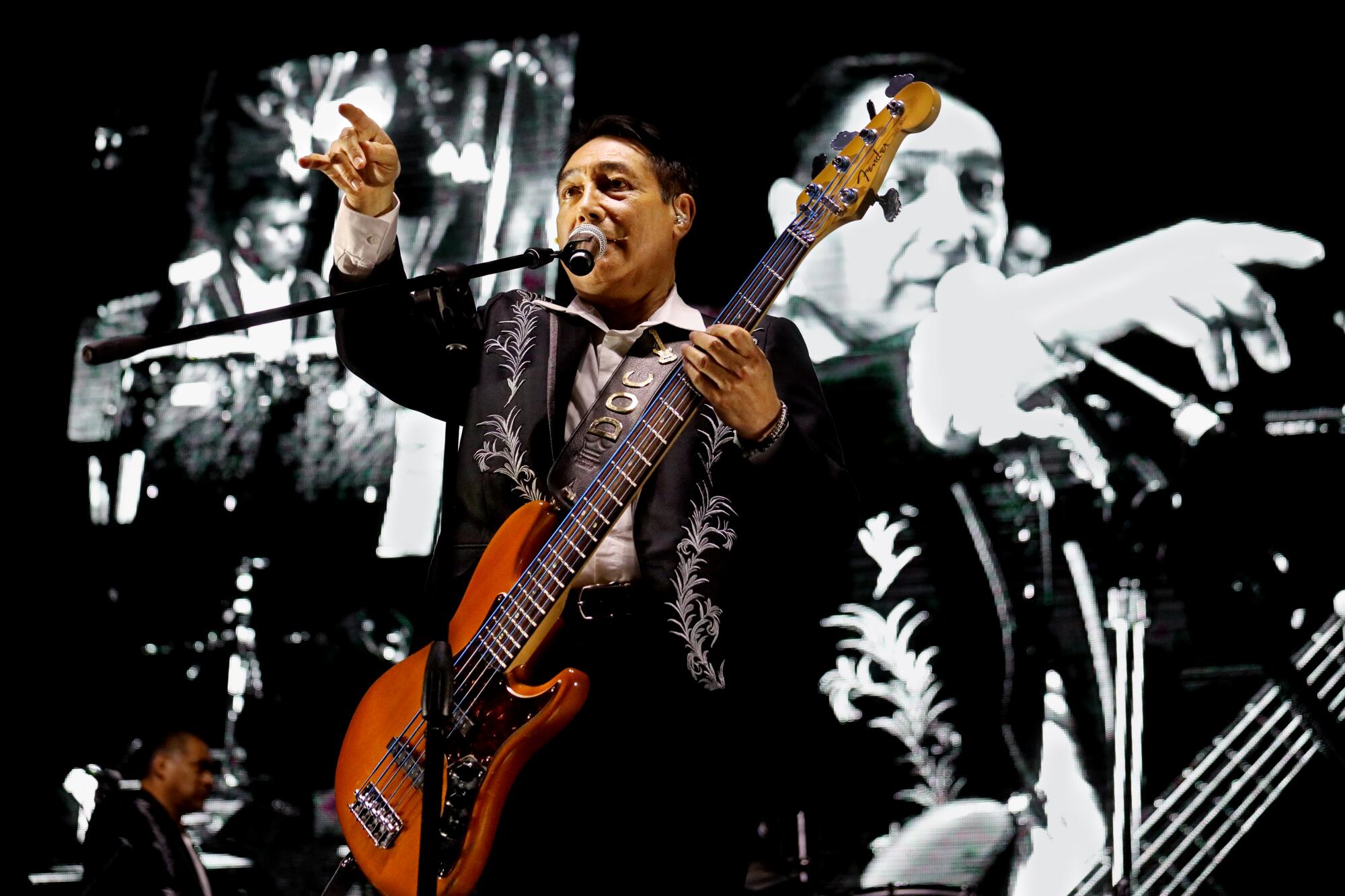
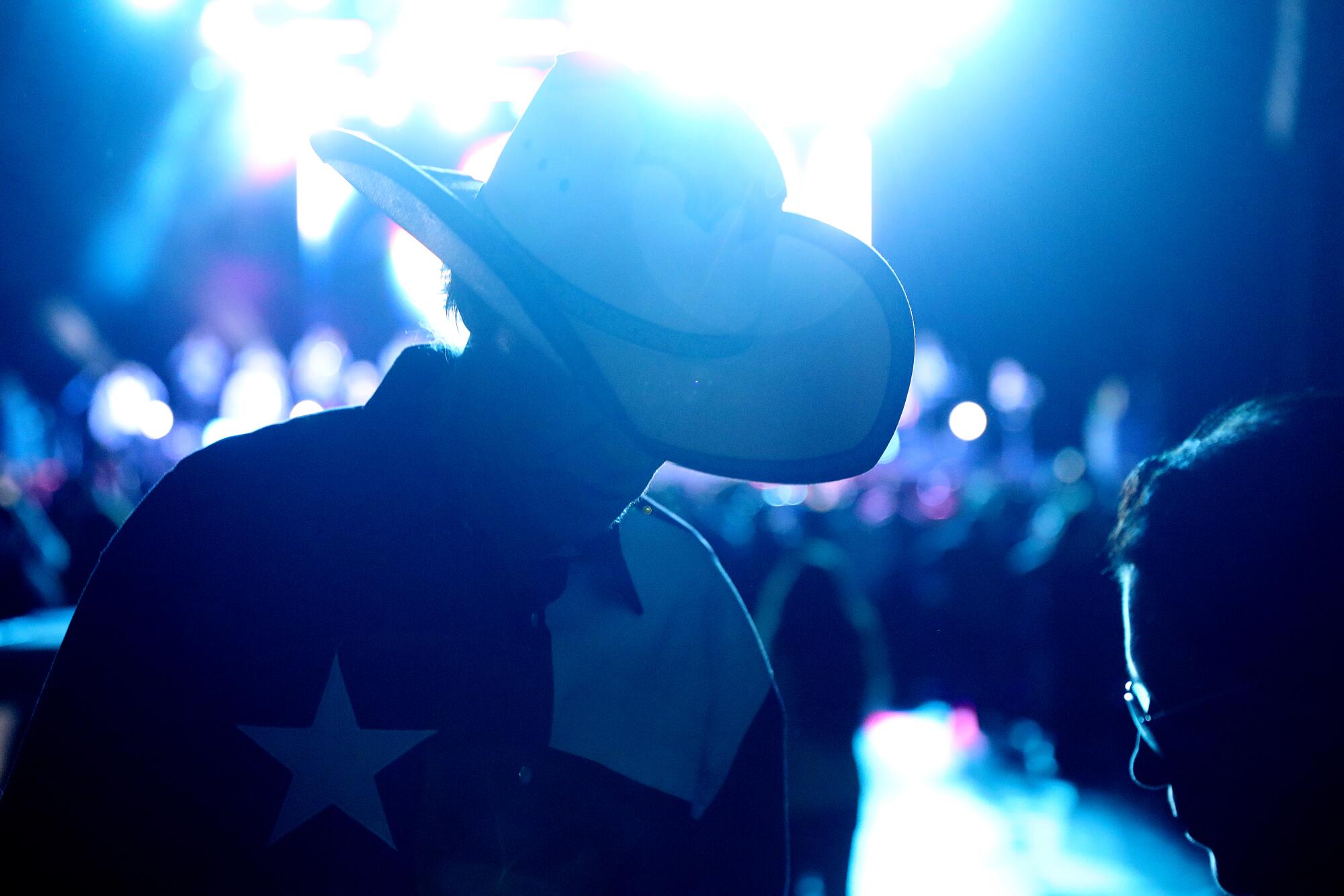
For the record:
8:18 a.m. Dec. 6, 2021An earlier version of a caption in this article identified the photo subject as Jorge Mejia Avante. He is Elías Mejia Avante.
In this part of Florida, there are Latinos from across the hemisphere. A restaurant might have Mexican comedy on the television, Dominican bachata music on the radio and Honduran baleadas and Salvadoran pupusas on the menu.
People’s histories and politics differ, García said, but they all share the experience of leaving home. “Migration is a trauma,” she said. “It’s a loss.”
“Music is like another language,” she continued. “Music connects us.”
As people lined up to get in the arena, García took out her phone and started livestreaming. “Who wants to be in my Facebook Live?”
To a stranger wearing a bright blue dress — the color of the flag in El Salvador, her native country — García asked: “Which song are you going to sing?”
“El Listón de Tu Pelo,” the woman said with a smile.
García turned to an older couple and posed the same question.
Latino artists are a rarity in country music, while white artists wink at the culture with songs about señoritas or tequila shots in Juarez.
“Mi niña, mi niña mujer,” the man said, crooning a lyric from a hit song of the same name.
“Where are you from?” García asked.
“Veracruz, Mexico!”
“And you?” she said, turning to a man dressed in his Sunday best. “Are you going to dance?”
The man gave at her look that was both incredulous and teasing.
“Of course,” he said. “That’s why we came.”
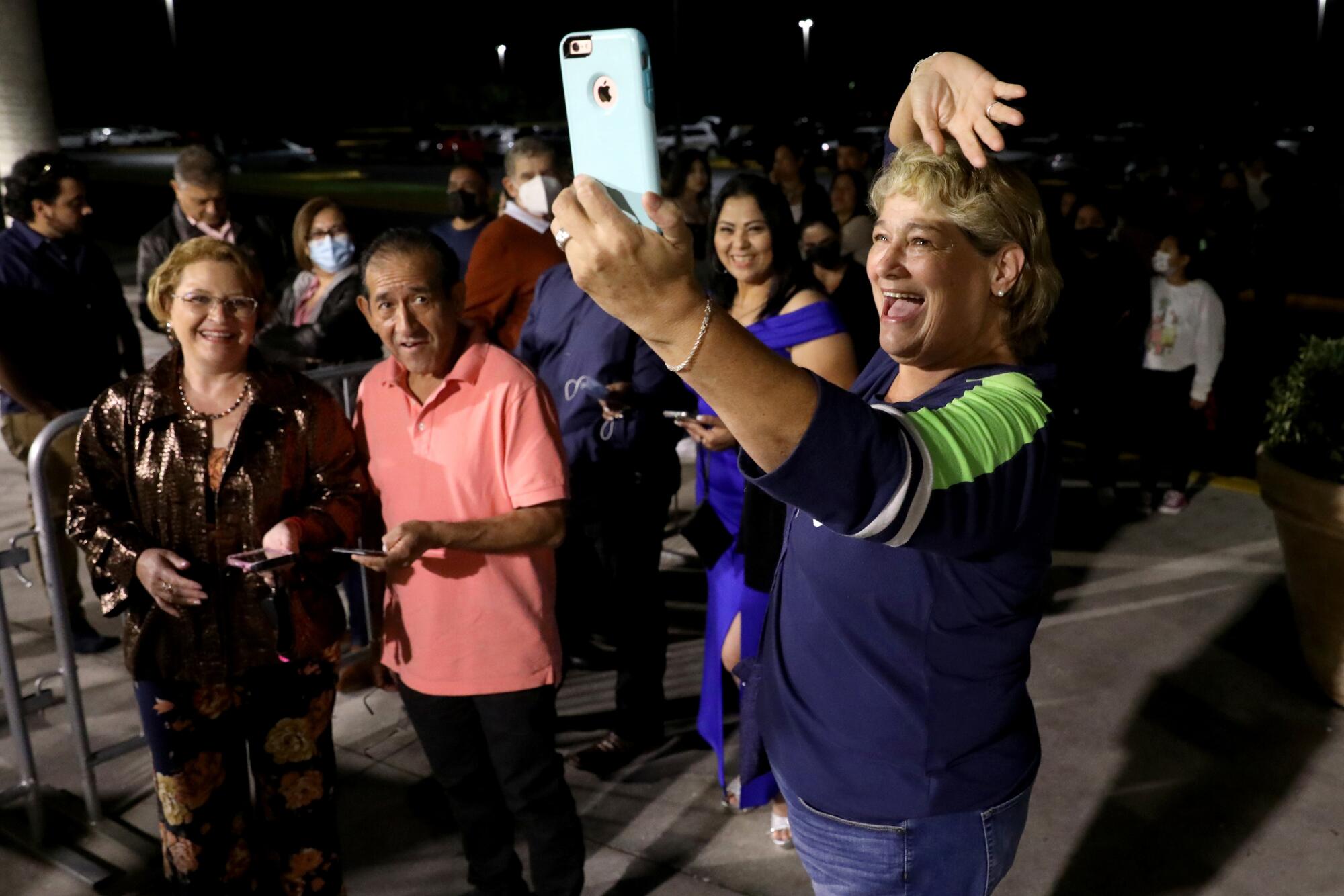
More to Read
Sign up for Essential California
The most important California stories and recommendations in your inbox every morning.
You may occasionally receive promotional content from the Los Angeles Times.


